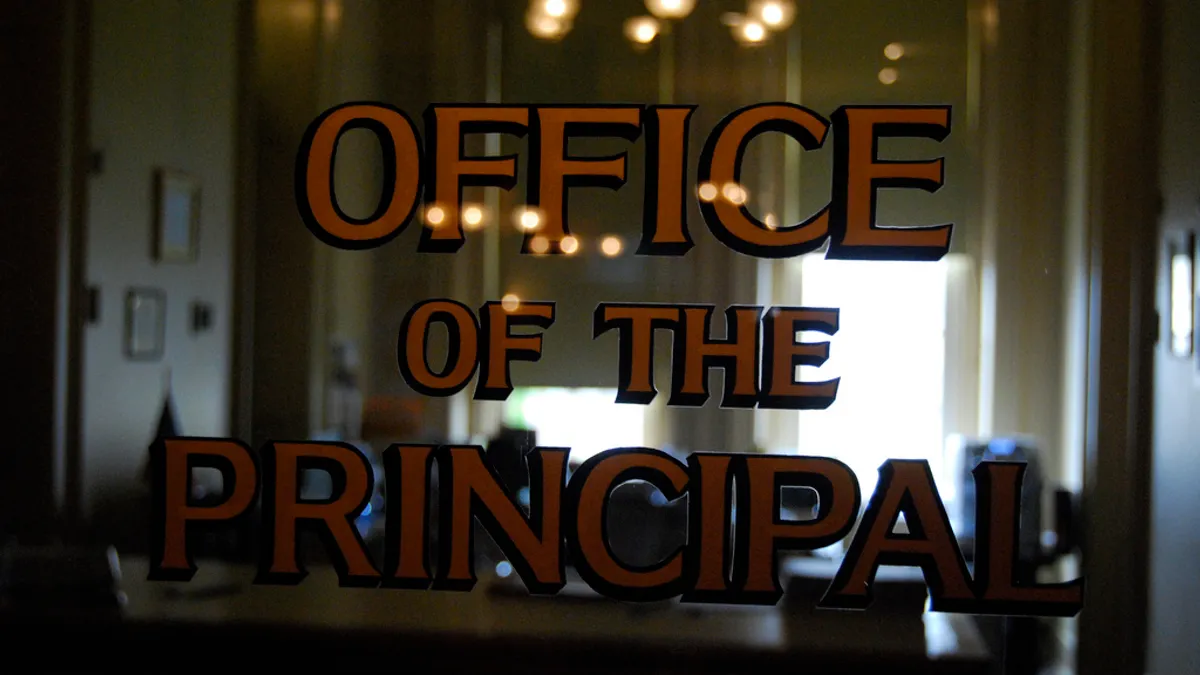Dive Brief:
- Building realistic optimism throughout the pandemic has been a challenge for administrators and educators alike, and while Superintendent PJ Caposey of Illinois’ Meridian Community Unit School District 223 writes for Edutopia that it’s OK to admit if you’re struggling, he offers four insights to help leaders refocus and boost morale.
- First, he stresses educators must recognize that no easier option or miracle solution is going to walk through the door. Once they’ve accepted that, they can articulate their position they’re in — in his case with openness and vulnerability — to their school boards, leadership teams and other stakeholders to reinforce personal agency and rally support.
- Next, Caposey writes, leaders should examine district strategies to identify what resources and tools should be kept and what can be tossed out, but not necessarily what can be added, based on what has worked well in the past 20 months. Finally, he advises school leaders to identify around five tasks that add joy to their work and focus on fitting those in throughout the week.
Dive Insight:
The pandemic has taken its toll on the mental and emotional health of students and educators alike since disrupting school schedules and learning models in March 2020.
Administrators found themselves in a position of having to reimagine how learning would take place entirely, transitioning their schools to remote models their teachers most likely were never prepared to teach in and many students were unprepared to learn in. On top of needing to quickly arrange professional development to address this for educators, school leaders also had to consider the toll of pandemic stressors on both teachers and students.
A MissionSquare Research Institute survey of 1,203 state and local government employees conducted in May and released in October found K-12 employees almost twice as likely as other government employees — 42% compared to 22% — to report having a difficult time adjusting to changes brought on by COVID-19.
Additionally, K-12 employees reported higher levels of anxiety (34%), stress (52%) and burnout (52%).
In a March survey of California educators by EdSource and the Inverness Institute, respondents reported feeling the pandemic created longer workdays for them, with 59% saying they felt the public misunderstood their workloads “to a very great extent,” while another 23% felt their workloads were misunderstood to “a great extent.”
As a result, stress, burnout and shortages have reached crisis levels in some districts nationwide. According to a Rand Corporation survey released in June, a quarter of teachers are likely to quit their jobs this school year. Shortages and burnout have also led districts in Washington, Colorado and other states to cancel classes due to requests for time off.
In recent months, district leaders have recognized the need for staff social-emotional supports, implementing programs to renew joy in teaching and learning. For example, in Metropolitan School District of Wayne Township in Indianapolis, Indiana, educators learned to recognize their own social-emotional needs while being trained in the Committee for Children’s Second Step SEL curriculum.
In September, Jessica Cabeen, principal of Ellis Middle School in Austin, Minnesota, and K-12 Dive’s 2021 Principal of the Year, said it’s important for leaders to recognize staff as people before their positions, as well as to encourage themselves and their staffs to set boundaries around their time.
Principals should also recognize which tasks absolutely require them to be present to perform, and which tasks can be shared between themselves and their assistant principals, she said.














